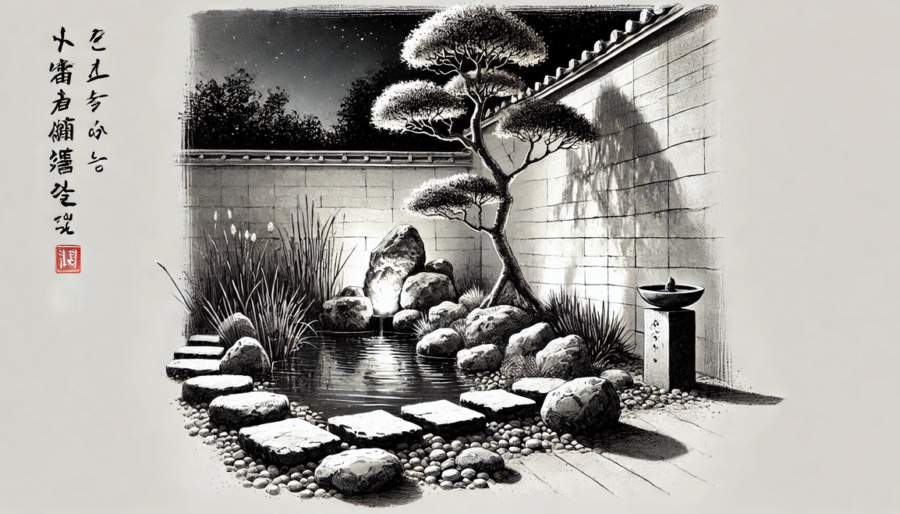Stone Cold, but in a Good Way
Ever wondered why ancient castles, built entirely of thick stone, manage to feel cool in summer yet somehow cozy in winter? No, it’s not medieval wizardry—it’s thermal mass at work. Rocks, bricks, and dense materials have a secret talent: they absorb heat, hold onto it, and then let it out like a slow exhale, regulating temperature fluctuations in a way that your HVAC system can only dream of.Now, you might not live in a stone fortress (if you do, congratulations), but you can still harness the magic of thermal mass by adding strategically placed rock gardens and water features around your home. Your energy bill—and your internal sense of climate justice—will thank you.
Why Rocks Make Great Climate Control Agents
Rocks have a lot going for them. They don’t complain, they don’t need maintenance, and they last for thousands of years (give or take an Ice Age). More importantly, they’re great at soaking up heat during the day and gradually releasing it at night.This is especially handy if your house endures wild temperature swings between day and night. A rock garden placed near an exterior wall will absorb solar radiation all day, then gently radiate warmth as the evening chill sets in. In winter, this same effect can help buffer the cold, making your indoor climate feel more stable without overworking your heating system.
If you’ve ever leaned against a sun-warmed boulder in the late afternoon and felt that delightful stored heat, you’ve already experienced this principle firsthand. Now, imagine your house being hugged by those warm, reliable stones.
Water: Nature’s Thermal Mass MVP
Water plays by similar rules, but with even more finesse. It has an impressive heat capacity, meaning it can store and release thermal energy even more efficiently than stone. A pond, fountain, or even a decorative reflecting pool near your home can act like a climate buffer, absorbing heat during the day and preventing rapid temperature shifts at night.This is why coastal areas tend to have milder climates—large bodies of water help regulate temperature, keeping things from getting too extreme. You can recreate this same effect on a micro-scale with a backyard water feature positioned near your home’s walls.
Of course, a giant lake in your front yard might be overkill (and a zoning nightmare), but a well-placed pond or even a line of water-filled decorative pots can do wonders for temperature stabilization. Plus, it just looks fancy, and who doesn’t want a bit of that?
The Best Rock and Water Pairings for Maximum Thermal Benefits
If you really want to squeeze every ounce of thermal efficiency from your landscaping, the trick is combining stone and water features for the best results. Some winning combinations include:- Rock garden + small pond: The rocks store and radiate heat, while the water stabilizes temperature swings.
- Stone pathway + shallow water channel: Walking barefoot on warm stones after sundown? Luxurious and practical.
- Thermal walls with embedded water features: If you want to go all out, a wall made of thick stone with a built-in water element can work as a passive climate control system.
Strategic Placement: Where to Put Your Thermal Mass Features
Not all rock gardens and water features are created equal—placement is everything. Put a rock garden in the wrong spot, and instead of stabilizing indoor temperatures, you might just end up with a very fancy heat trap. Here’s how to do it right:- South-facing walls: In most climates, placing thermal mass features near a south-facing wall will give you the most benefits, as they’ll absorb the most sun throughout the day.
- Windbreak zones: Positioning stone features in areas prone to cold winds can help insulate your home by blocking those frigid gusts before they reach your walls.
- Shaded ponds for steady cooling: A water feature in a semi-shaded area can provide evaporative cooling, making the surrounding air feel more comfortable in hot weather.
- Rooftop or courtyard designs: If you’re feeling ambitious, integrating thermal mass into rooftop gardens or enclosed courtyards can provide exceptional heat regulation.
Aesthetics vs. Function: Why Not Both?
Let’s be honest—no one wants a yard that looks like it was designed by an engineer with no artistic vision. Fortunately, thermal mass landscaping can be both practical and stunning. Rock gardens, for instance, can double as sculptural elements, Zen retreats, or even naturalistic habitats for local wildlife.Water features? They don’t just stabilize temperatures; they add ambiance, attracting birds, frogs, and a general sense of serenity. And if you’ve ever stared at a well-placed koi pond for an unsettling amount of time, you know exactly what I mean.
If done right, you’ll create an outdoor space that’s not just good for climate control but also a backyard paradise where you can sip your morning coffee and feel superior about your energy efficiency.
The Long-Term Payoff: Lower Bills, Higher Comfort
Beyond just looking good and making your home more comfortable, thermal mass features can actually save you money. By reducing the need for artificial heating and cooling, these natural elements help take the strain off your HVAC system, which means lower energy bills and less environmental impact.Plus, think about the sheer satisfaction of telling guests that your house is partially climate-controlled by boulders and a small pond. There’s a certain primal joy in harnessing nature’s own tricks instead of relying entirely on modern technology.
Rock Solid Climate Control
At the end of the day, your home doesn’t have to be at the mercy of extreme weather swings. With a little planning and a few well-placed rock gardens or water features, you can turn your landscape into an extension of your insulation system.Nature has been regulating temperatures for billions of years—why not let it do some of the work for your house? Plus, if anyone asks, you can casually mention that you’re using the same thermal principles as ancient castles, which instantly makes you sound cooler. Or warmer. Depending on the season.
Article kindly provided by insulationcommandos.com/omaha


